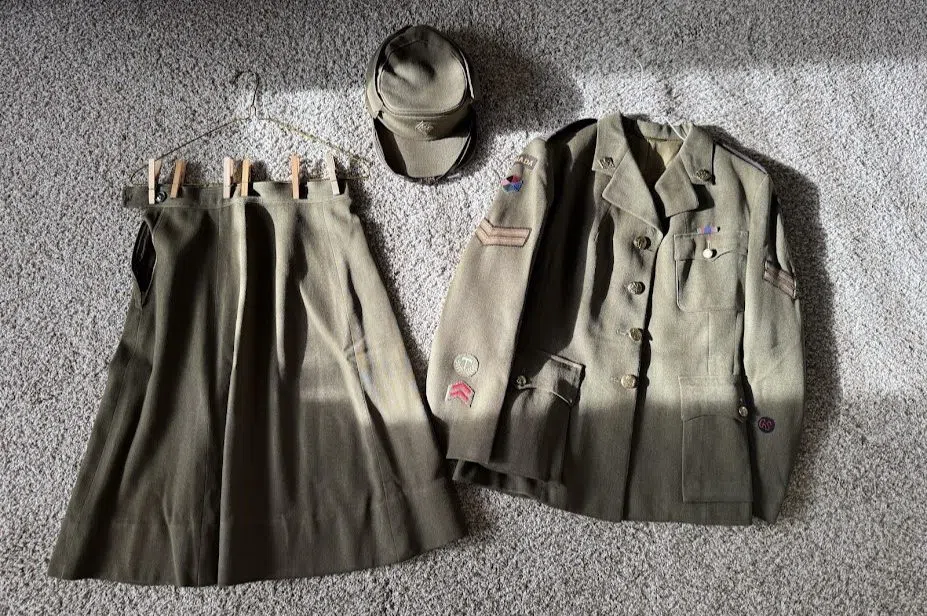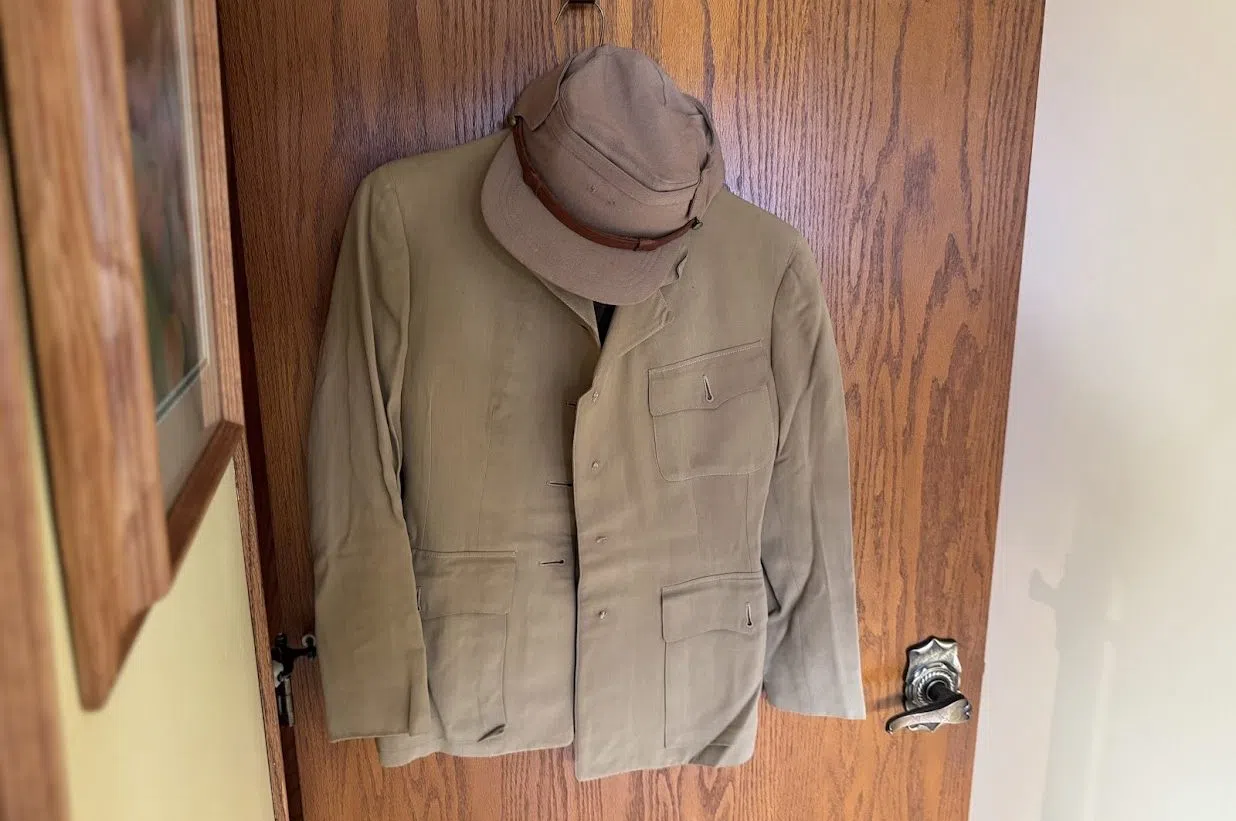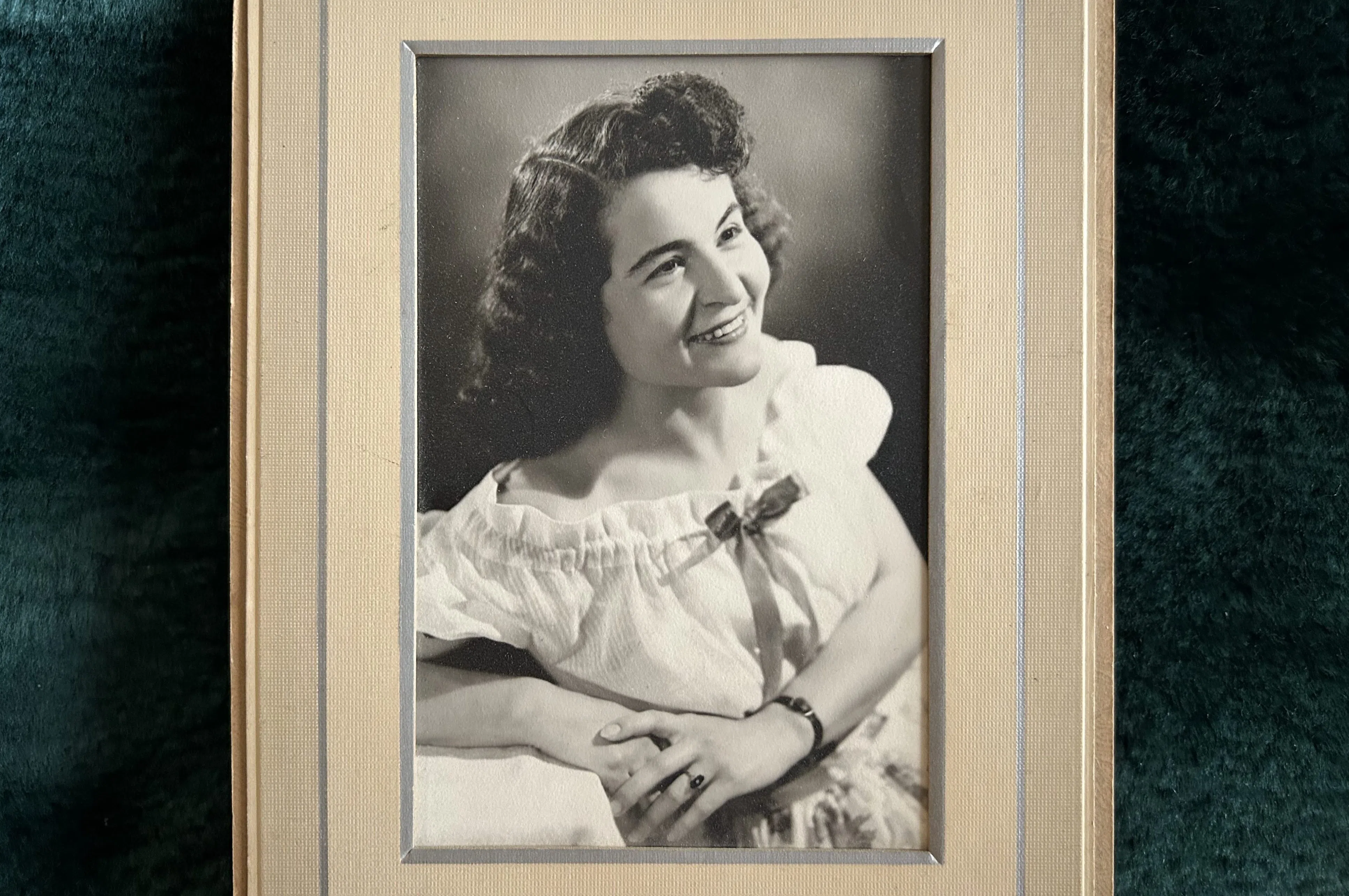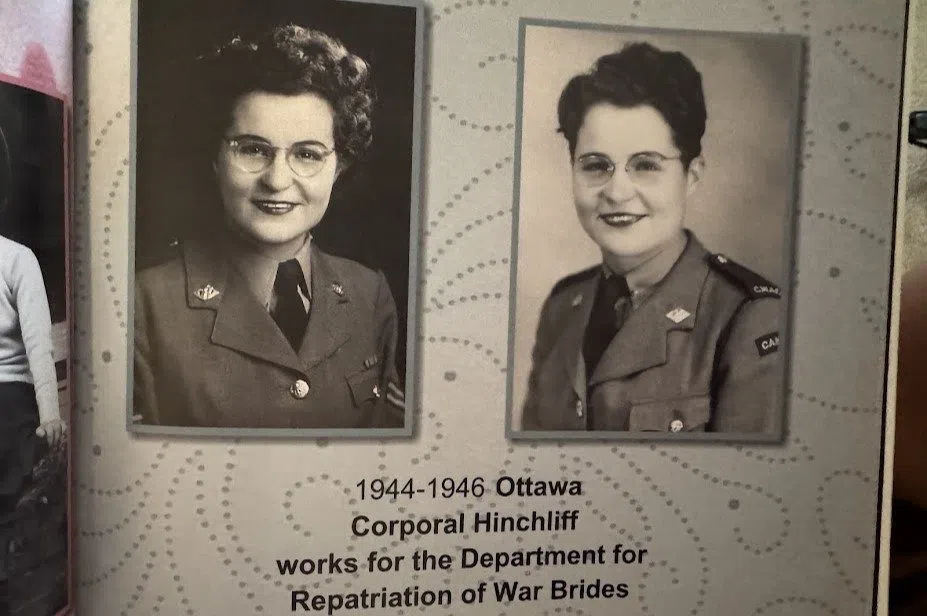At first glance, one might assume Joyce Temple is much younger than her 100 years. Her vibrant spirit and lively demeanor give her an air of youthful energy that defies her age.
The deep smile lines etched in her skin tell the story of a life filled with joy and rich experiences, and her gentle eyes glimmered as she settled in, ready to share memories from her youth.
In 1944, Temple was a young woman living on a sprawling farm in rural Saskatchewan, surrounded by the beauty of nature and the weight of responsibility.
Looking back, she reflected, “After I graduated from Grade 12, I worked for my dad on the farm for a year and a half because all the young fellows had gone. They had all joined up and were gone in the military.”
During the Second World War, many young Canadians left their homes to serve, leaving a noticeable void in communities like hers. Temple took on the role of a hired man, helping her father manage the farm.
As the months went by, the absence of her loved ones weighed heavily on her heart, igniting a growing sense of duty within her.
“All my cousins had gone, my sister had gone… So I thought, ‘Ah, what the heck — I’m going to join up, too.”
Temple enlisted in March 1944, and even the first step of her new adventure was memorable. Having only driven around the farm previously, she was permitted to take the family car on the 160 kilometre trek east to Saskatoon.
Her early days of service were filled with new experiences. She travelled to Vermillion, AB, for basic training where she says she made a diverse new group of friends.
“You met girls from all over, you know! From Nova Scotia to Prince Edward Island to Victoria,” she said, smiling as she recalled the names and faces of long-lost friends.
“It was an interesting situation to talk to everybody from everywhere — that was an education in itself.”
Aside from Temple’s newfound social education, she was also quickly introduced to the world of military protocol and operations.
“You had to learn the whole military echelon from top to bottom,” she recalled. “That was kind of hard to learn. And then the airplanes — you had to identify which ones were Canadian aircraft, and so on.”
Temple says aside from a crash-course in military jargon, her memories of basic training include a lot of marching, and a menu that was poorly lacking.
“The food wasn’t that great because they were on a budget,” she chuckled.
The budget constraints were understandable. With over a million Canadians serving during the war, feeding and clothing so many was no small feat.

Temple’s winter and summer uniforms both included skirts. While women who worked as mechanics during the war were permitted to wear trousers, women in administrative roles were not. (Alex Brown/650 CKOM)
Temple vividly remembers the military uniform: “You had a skirt, a jacket with brass buttons that you had to polish daily, khaki shirts that you had to starch,” she said
The winter coat she wore had a wide collar that could be flipped up against the cold.
Temple also fondly recalled the practicality of her army purse.
“It was a little thing with a strap that went over your shoulder. You could unbutton the lapel and tuck the purse strap inside so it wouldn’t fall off. That was great!”
She wore her uniform with pride as she boarded the train to Ottawa, where she was stationed in the department for the repatriation of war brides.

Temple’s summer uniform was made of a light khaki material which kept her relatively cool. This jacket once had brass buttons that she recalls polishing daily during her service. (Alex Brown/650 CKOM)
Women working in Ottawa in Temple’s department were responsible for handling the administrative work necessary to bring women who had married Canadian soldiers during the Second World War to Canada.
Their tasks included processing immigration documents, coordinating travel arrangements, and ensuring that the necessary legal and administrative steps were followed for brides from countries such as the United Kingdom, the Netherlands, Belgium, and other Allied nations.
These women worked diligently to help reunite families and assist war brides in starting new lives in Canada.
Despite the serious nature of their work, camaraderie grew between Temple and her female colleagues. One particularly memorable occasion stands out in her mind — an ice storm that struck the city. As the war effort had drained resources, basic public services like snow removal were ignored.
“The sidewalks were just mounded up with snow,” she said with a laugh.
“Three of us who worked in the same office would leave the barracks arm in arm so that we could get up these mountainous paths and keep each other upright.”
In both the office and the barracks, media was censored.
“None of us had radios. We didn’t even listen to the news,” Temple recalled. It wasn’t until after the war’s end in 1945 that Temple learned the full extent of the horrors that had unfolded.
“I can remember being absolutely appalled to find out that German submarines had been in the St. Lawrence River,” Temple said, sadness dimming her bright eyes as she recalls the shock she felt.
“And to learn about the concentration camps and see those pictures — it was absolutely devastating. We didn’t have newspapers in the barracks, so we had no idea what was really happening until after the war ended.”
After two years of service, Temple faced a pivotal decision. By July 1946, she had made up her mind to return home. The military offered her a promotion, but Temple turned it down.
“I said, ‘You wouldn’t give me the stripes when I was working, so no thanks. You can keep them. I’m going home!’” she said, standing firm in her decision to leave.
After returning from service, Temple was able to attend university, a rare opportunity for many of her peers. She says veterans were granted one day of university for each day served, along with modest financial support of $60 a month.
Though the amount was small, it allowed Temple to pursue higher education when many others couldn’t due to financial constraints.

After returning from service, Temple was able to attend university, a rare opportunity for many of her peers. Her area of study was home economics. (Brittany Caffet/650 CKOM)
Temple notes that while she never had the chance to meet any of the war brides she helped bring to Canada, the passage of time has brought unexpected connections — even within her condo building.
One such moment stands out.
“Oh, one of the ladies in here,” she said, recalling a recent encounter. “When she moved in, I was greeting her, welcoming her to the place. She asked, ‘What did you do in the Army?’ And I said, ‘I worked in the department for the repatriation of war brides.’ She told me ‘You brought my mother over here!’”
As she reflects on her contributions, Temple is reminded of the other Canadian women who served during World War II — women who, like her, answered the call to duty and helped shape the course of history.
Whether on the front lines, on the home front or in administrative roles like Temple’s, their impact was immeasurable.














